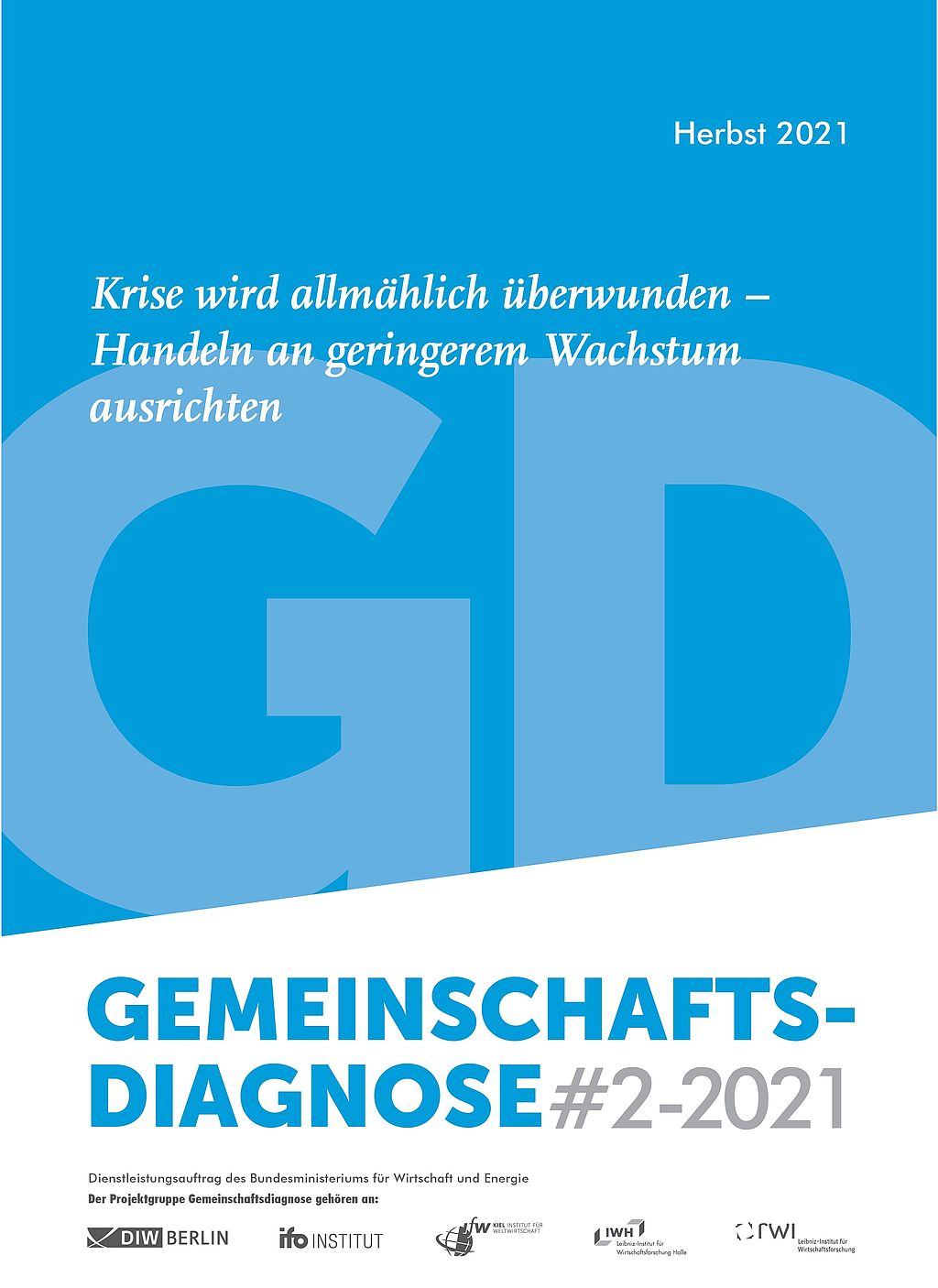East German economy less affected by supply bottlenecks than German economy as a whole, but lower vaccination rates pose risks – Implications of the Joint Economic Forecast Autumn 2021 and of Länder data from recent publications of the Federal Statisti
In its autumn report, the Joint Economic Forecast Project Group states that the economic situation in Germany is still shaped by the Corona pandemic. In addition, supply bottlenecks for intermediate products are currently hampering production in the manufacturing sector. This also applies to the East German economy. ”However, these bottlenecks do not have quite the same impact on economic production because the manufacturing sector and especially the automotive industry, which is strongly affected by the bottlenecks, have a somewhat lower weight in the east,” says Oliver Holtemöller, Head of the Department Macroeconomics and Vice President at the Halle Institute for Economic Research (IWH). The supply bottlenecks have not been fully reflected in the data for Gross Domestic Product in the German states (Länder) reported by the Federal Statistical Office for the first half of 2021. According to this, the rate of change of the price-adjusted Gross Domestic Product in East Germany was, with a bit more than 2%, 0.7 percentage points below that of Germany as a whole. The main reason for the difference is high growth in Baden-Württemberg and Bavaria, where the manufacturing sector is particularly important.
The pandemic poses risks again in the coming winter, especially for contact-intensive services. Here the conditions in the east are less favourable than in Germany as a whole: Based on data from the Robert Koch Institute for the federal states, the current (10 October) rate of fully vaccinated persons in East Germany is about 60%, for Germany the rate is 65%. The pandemic already seems to have had more of a dampening effect on restaurants and hotels in the east than in the west over the summer. An evaluation of turnover figures in east and west by the Federal Statistical Office has shown that West German turnover in the hospitality industry from March to July 2021 has increased slightly compared to one year ago, while East German turnover has fallen further.
All in all, growth in East Germany in 2021 will, with 1.8%, probably be slightly lower than in Germany as a whole (2.4%). For 2022, when supply bottlenecks are less of a constraint on manufacturing, the gap between growth in Germany as a whole (4.8%) and in East Germany (3.6%) is likely to be wider. For 2023, growth in East Germany is forecast at 1.5% (Germany: 1.9%). The unemployment rate as defined by the Federal Employment Agency will fall from 7.1% in 2021 to 6.7% next year and 6.5% in 2023.
Joint Economic Forecast, autumn 2021 report (in German):
Joint Economic Forecast: Krise wird allmählich überwunden – Handeln an geringerem Wachstum ausrichten. October 2021. Halle (Saale) 2021.
Whom to contact
For Researchers

Vice President Department Head
If you have any further questions please contact me.
+49 345 7753-800 Request per E-MailFor Journalists

Head of Public Relations
If you have any further questions please contact me.
+49 345 7753-720 Request per E-MailIWH list of experts
The IWH list of experts provides an overview of IWH research topics and the researchers and scientists in these areas. The relevant experts for the topics listed there can be reached for questions as usual through the IWH Press Office.
Related Publications

Krise wird allmählich überwunden – Handeln an geringerem Wachstum ausrichten
in: Dienstleistungsauftrag des Bundesministeriums für Wirtschaft und Energie, 2, 2021
Abstract
Die wirtschaftliche Lage in Deutschland ist nach wie vor von der Corona-Pandemie gekennzeichnet. Nachdem neue Infektionswellen die Erholung im Winterhalbjahr 2020/2021 verzögert hatten, steigt das Bruttoinlandsprodukt seit dem Abebben des Infektionsgeschehens im Frühjahr nun wieder deutlich. Allerdings behindern im Verarbeitenden Gewerbe Lieferengpässe bei Vorprodukten die Produktion, sodass nur die konsumnahen Dienstleistungsbranchen zulegen. Im Winterhalbjahr dürfte die Erholung weiterhin gebremst werden. So ist davon auszugehen, dass in der kalten Jahreszeit die Aktivität im Dienstleistungsgewerbe auch bei geringem Infektionsgeschehen unter dem sonst üblichen Niveau bleiben wird. Zudem werden die Lieferengpässe die Produktion im Verarbeitenden Gewerbe vorerst weiter belasten. Im kommenden Jahr dürften die Beeinträchtigungen durch Pandemie und Lieferengpässe nach und nach zurückgehen, sodass die Normalauslastung wieder erreicht wird. Insgesamt dürfte das Bruttoinlandsprodukt im Jahr 2021 um 2,4% und im Jahr 2022 um 4,8% zulegen. Die Institute rechnen – nicht zuletzt infolge erhöhter Energiekosten – mit einem Anstieg der Verbraucherpreise um 3% im laufenden Jahr und um 2,5% im Jahr 2022. Das Defizit der öffentlichen Haushalte dürfte von 4,9% in Relation zum Bruttoinlandsprodukt im laufenden Jahr auf 2,1% im Folgejahr zurückgehen. Angesichts der kräftigen Zunahme des nominalen Bruttoinlandsprodukts wird die öffentliche Schuldenstandsquote wohl von 71% im Jahr 2021 auf 67% im Jahr 2022 abnehmen. Zwar dürften die wirtschaftlichen Folgen der Corona-Krise mit der Rückkehr zur Normalauslastung allmählich überwunden werden, aber die Herausforderungen des Klimawandels und das demografisch bedingt absehbar niedrigere Wirtschaftswachstum führen zu geringeren Konsummöglichkeiten.



